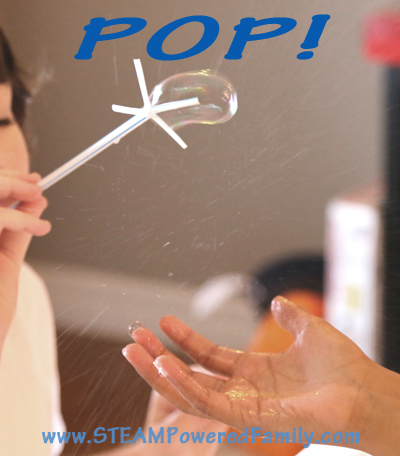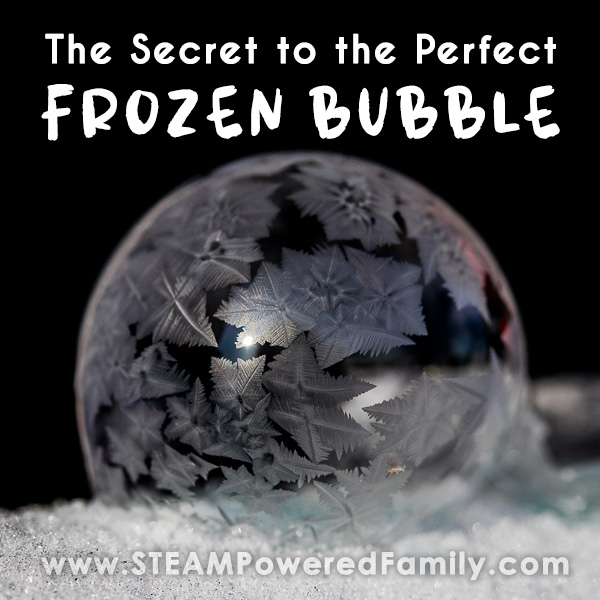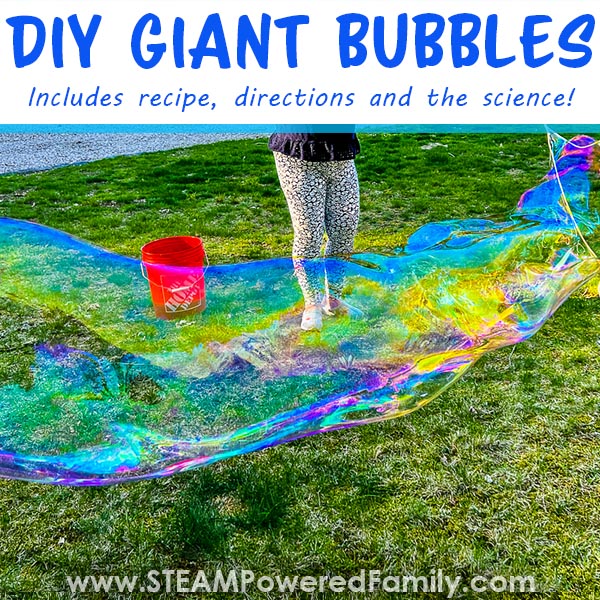Bubble Science Experiments
Who hasn’t taken a moment to study the swirling beauty of bubble colors? It’s like magical fairy kisses that dance their way across the surface. Underneath those mesmerizing bubble colors is some serious science, but who says we can’t have some fun too? Especially with bubble science?
This Bubble Challenge is an excellent activity for small (minimum 2 people are needed) or large groups, and kids of all ages. Even adults get in on the fun! And really, who doesn’t love bubbles? The science may be more appropriate for older kids, but even younger children will love exploring the bubble colors.
This is a great activity for classrooms, co-ops, troops, homeschoolers and other children’s programs. I’ve provided some low cost options for groups on a limited budget. Of course if you can afford to purchase bubble blowing supplies, that’s fantastic and will save you some prep time.
First up, we need to prepare for the challenge.
MAKE YOUR BUBBLE JUICE
The main thing you need for a making bubbles is bubble juice of course! There are lots of different recipes floating around. Pick your favorite, or here is what we did…
Bubble Juice Recipe:
6 cups of water
1 cup of dish soap
1 tablespoon of glycerin or 1/4 cup of corn syrup
Mix the first two ingredients together carefully to avoid too much foaming. Then mix in the glycerin or corn syrup (I find glycerin superior, but corn syrup will work in a pinch). Mix well, don’t shake and be careful to avoid too much foaming and bubbling.
HOMEMADE BUBBLE BLOWERS
To prepare for the Bubble Challenge you will need to make the bubble blowers. Each child should have their own bubble blower for obvious sanitary reasons and I recommend having extras on hand. Making your own bubble blowers is really quite simple and older kids can make their own! All you need is straight straws. Cut up the end of the straw about an inch, repeat to create 4 separate cuts. Bend back the ends so they fan out. Then from the other end measure down about 2.5 to 3 inches and cut a hole. Voila! You have a bubble blower!
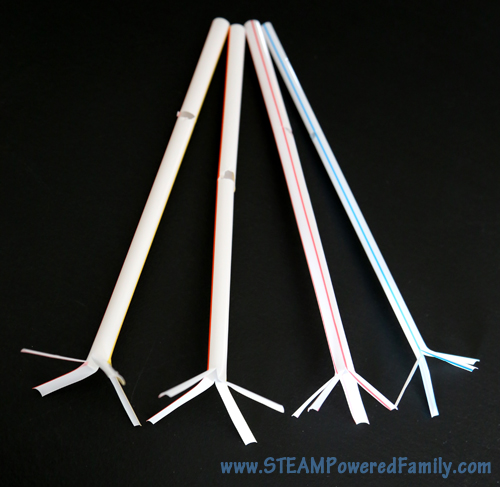
Now you are ready for the challenge!
First let the kids practice blowing bubbles with their new bubble wands. Show them how delicate bubbles are and that gentle, slow breaths are best.
THE CHALLENGE – CAN YOU CATCH A BUBBLE?
This challenge involves working in teams. You will need one bubble blower and one person to try and catch the bubble without it popping.
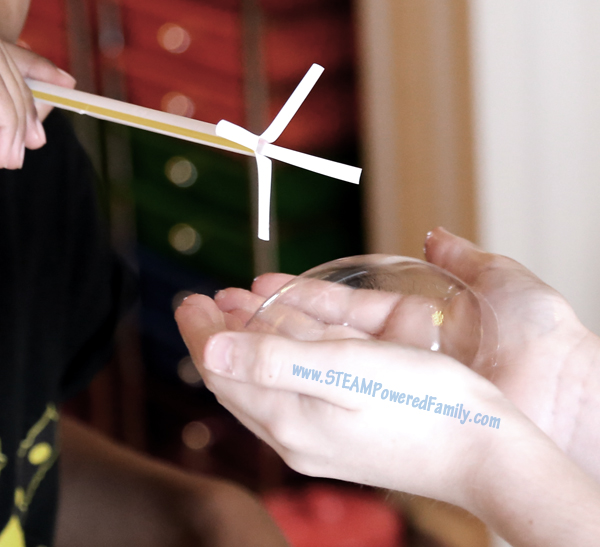
Once a bubble is successfully caught, how can they manipulate it?
Poke a finger into it without it popping?
Stretch it?
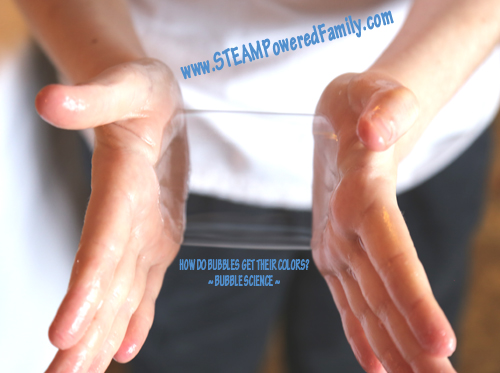
While handling the bubbles have the kids examine the colors. What colors do they see? Do they notice anything special about the colors? Now as they manipulate the bubble watch those colors and see how they change. Once they have had the chance for some hands on exploration, chat about the science behind those amazing, dancing bubble colors!
 THE SCIENCE BEHIND BUBBLE COLORS
THE SCIENCE BEHIND BUBBLE COLORS
Bubbles are made of ultra thin layers of soap and water that are on top of each other. There is actually a layer of soap, layer of water, then another layer of soap. The water is the cream filling in our Oreo bubble structure!
When you blow a bubble the air is trapped inside by surface tension and forms a sphere because that is the smallest stable structure.
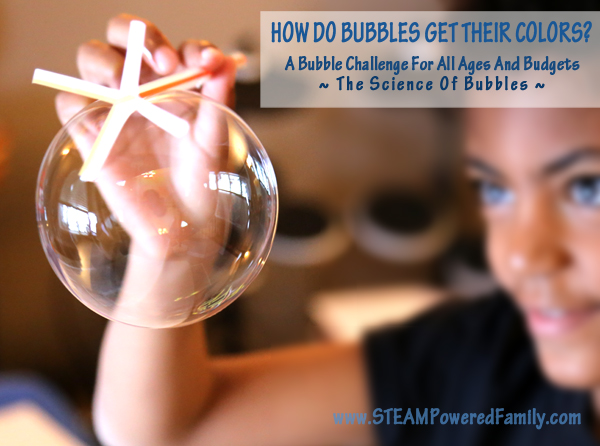
When light waves hit bubbles, the different layers reflect back the light at slightly different rates due to the slight distance difference caused by the layers. As these light waves travel back to your eyes they interfere with each other. Some work together and get brighter, others cancel each other out. What’s left is known as interference colors, aka bubble colors. That’s what your eyes see on the surface of the bubbles.
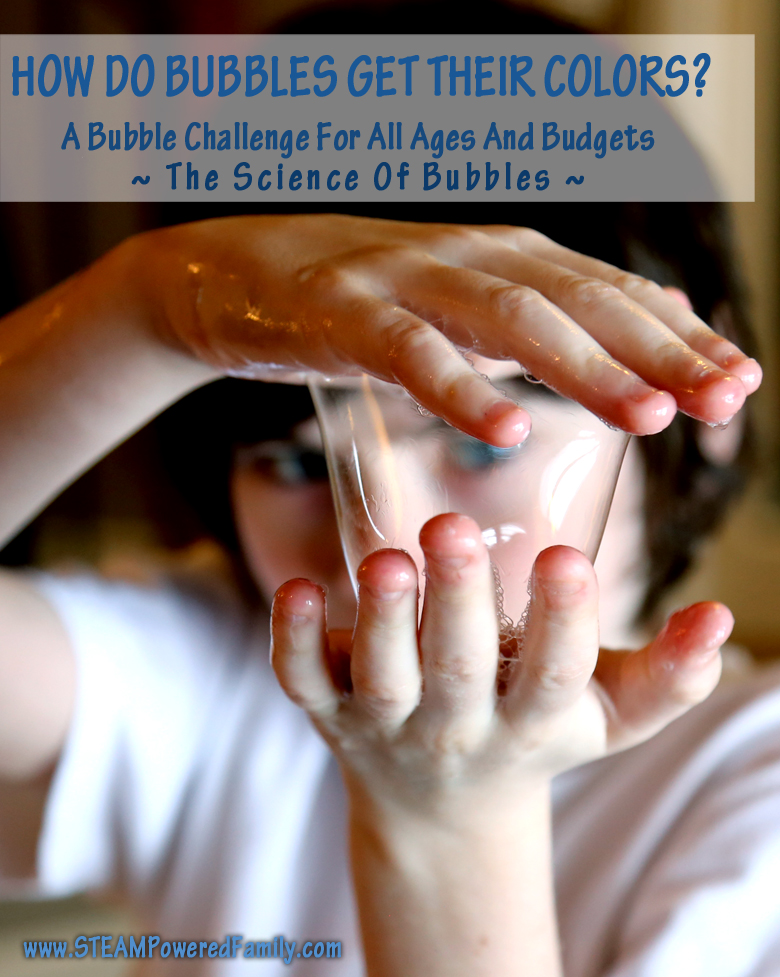
So now you know this, handle those bubbles again and take a look at how you can manipulate the bubble colors, or really impress your friends and use the scientific terms – interference colours!
But watch out when the bubble colors go dark, that means it’s about to…
POP!
I was so excited to catch this bubble in mid-pop!


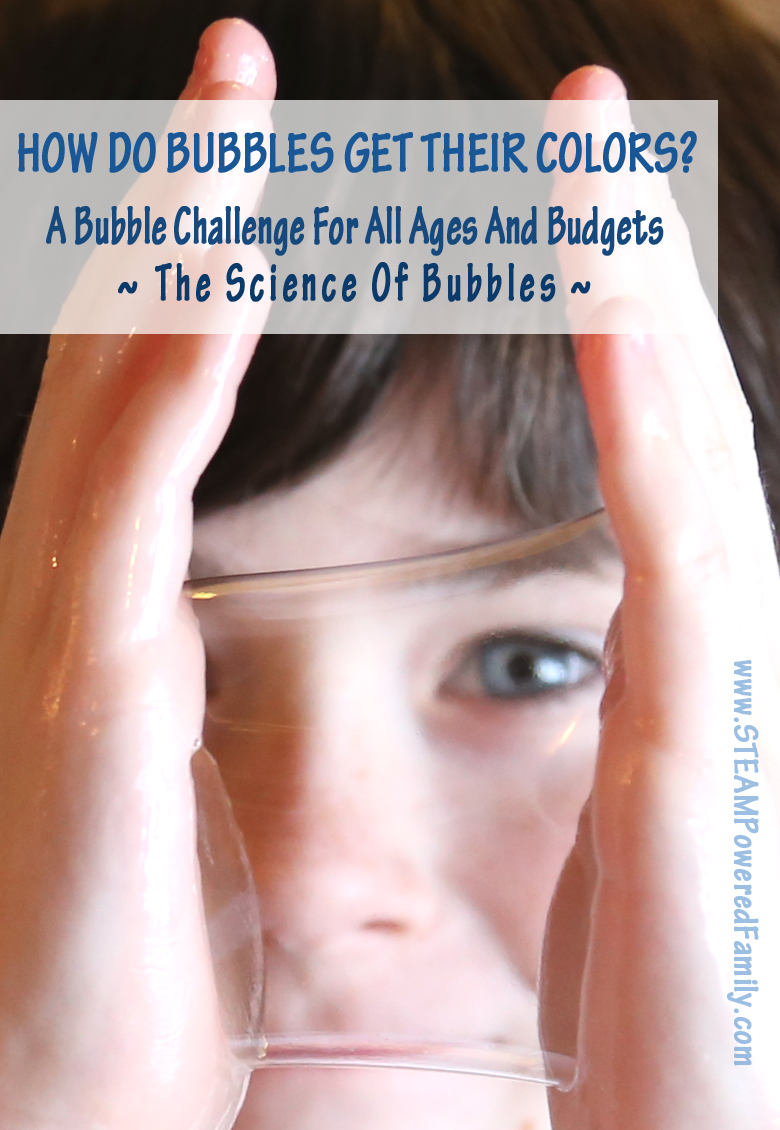
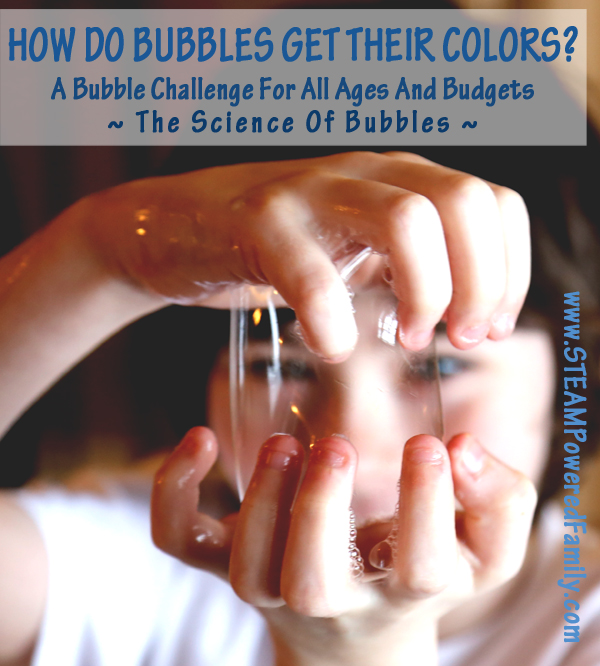
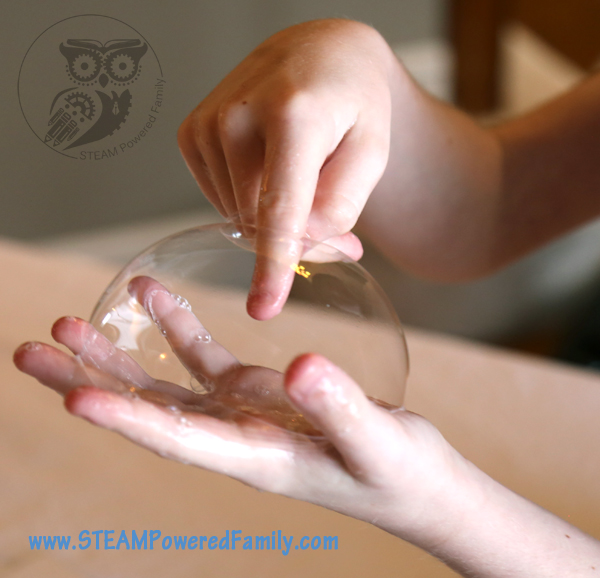
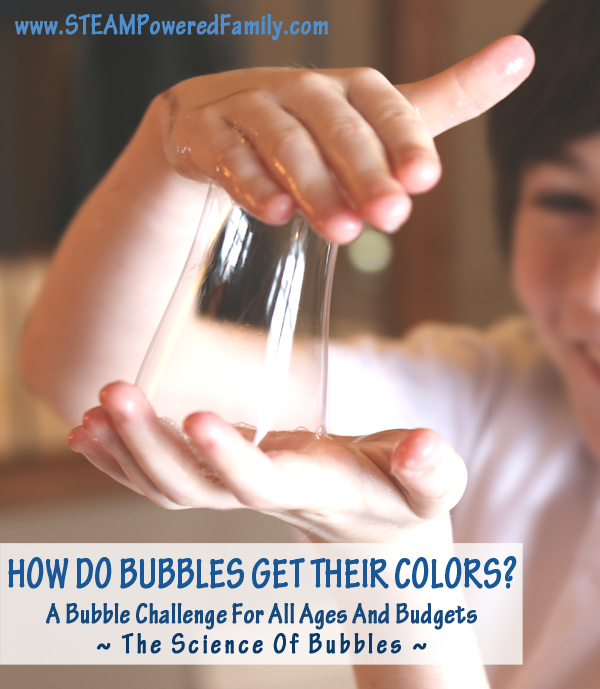 THE SCIENCE BEHIND BUBBLE COLORS
THE SCIENCE BEHIND BUBBLE COLORS